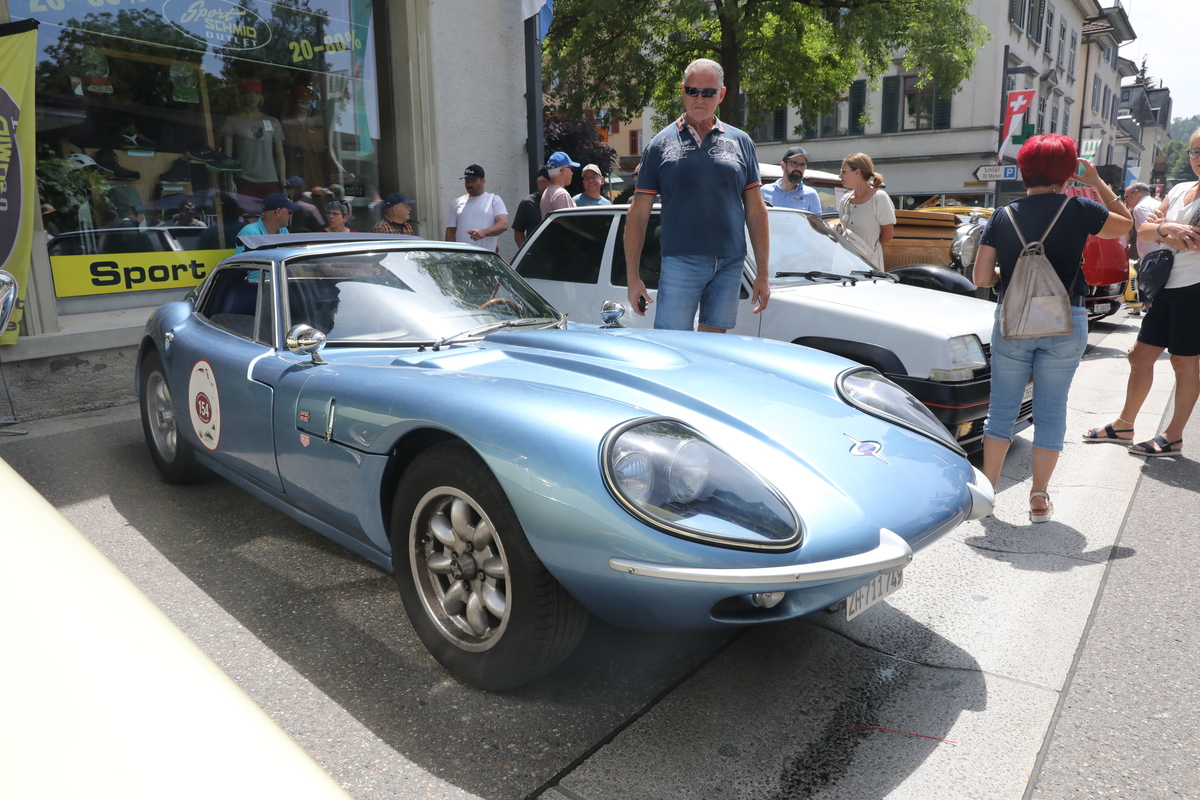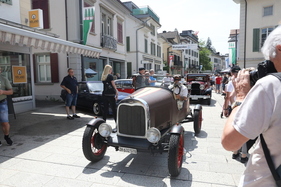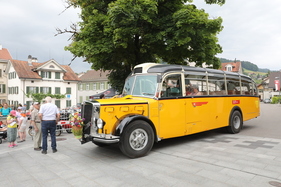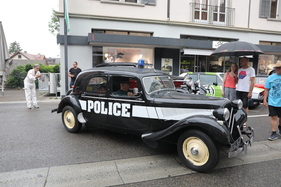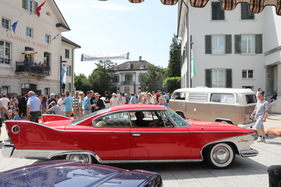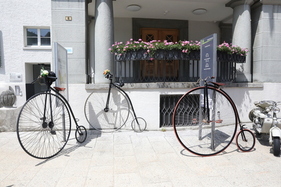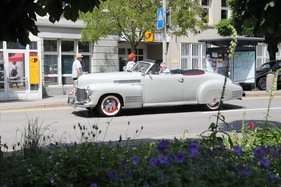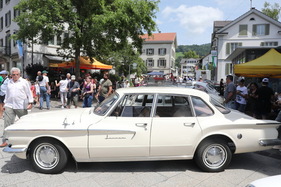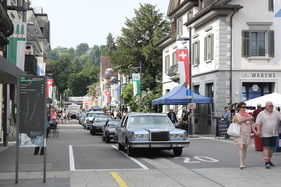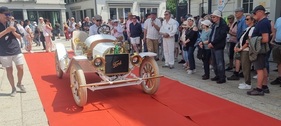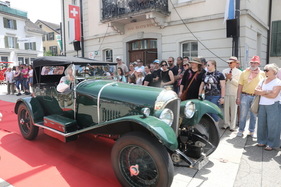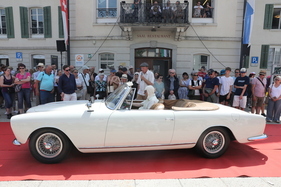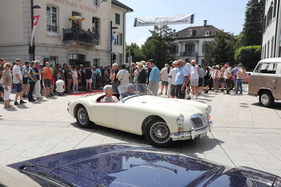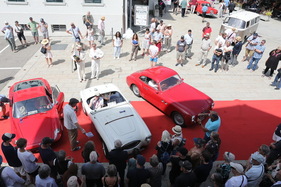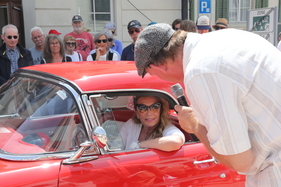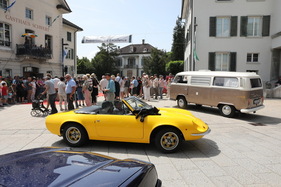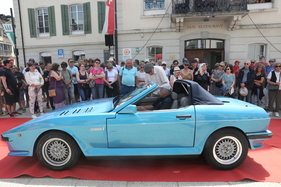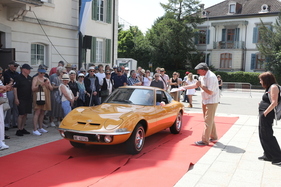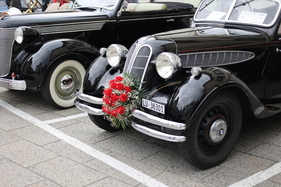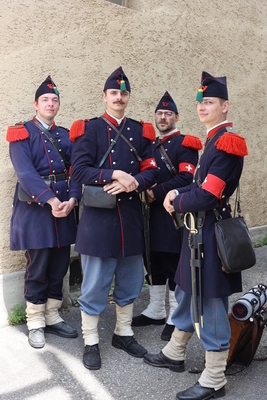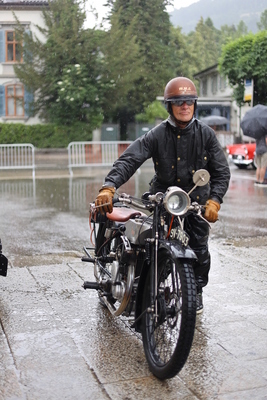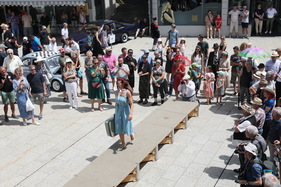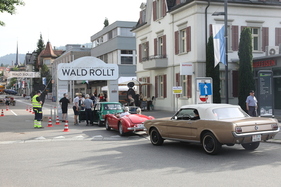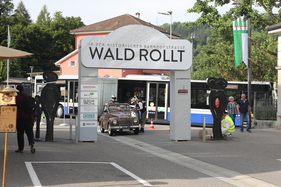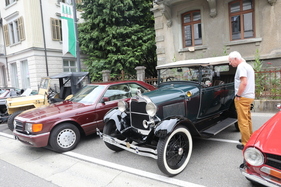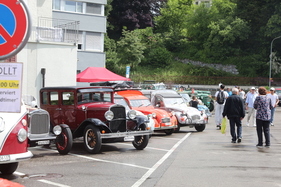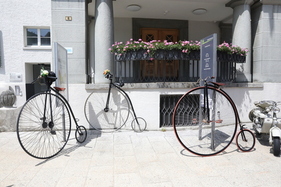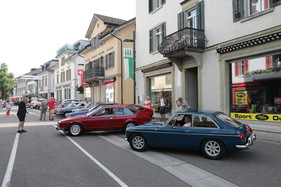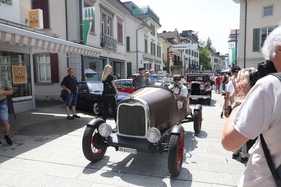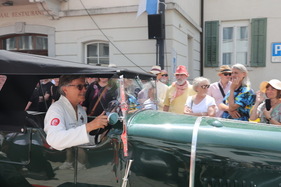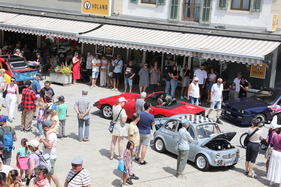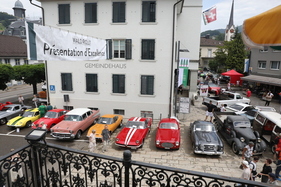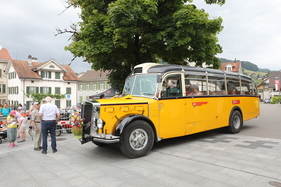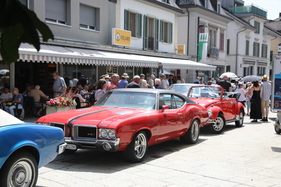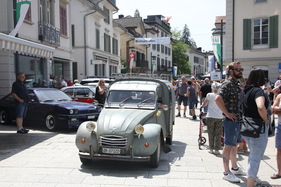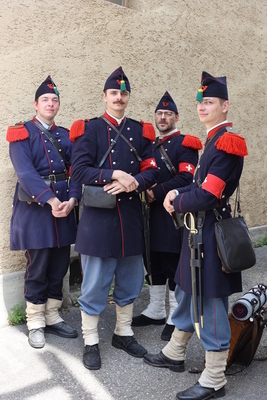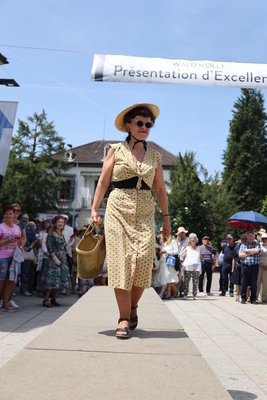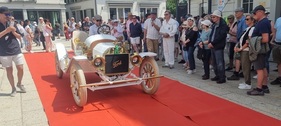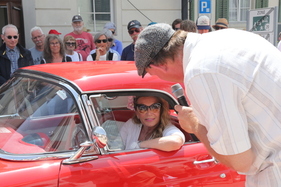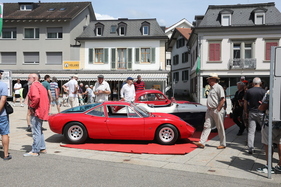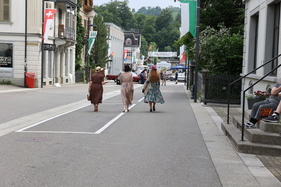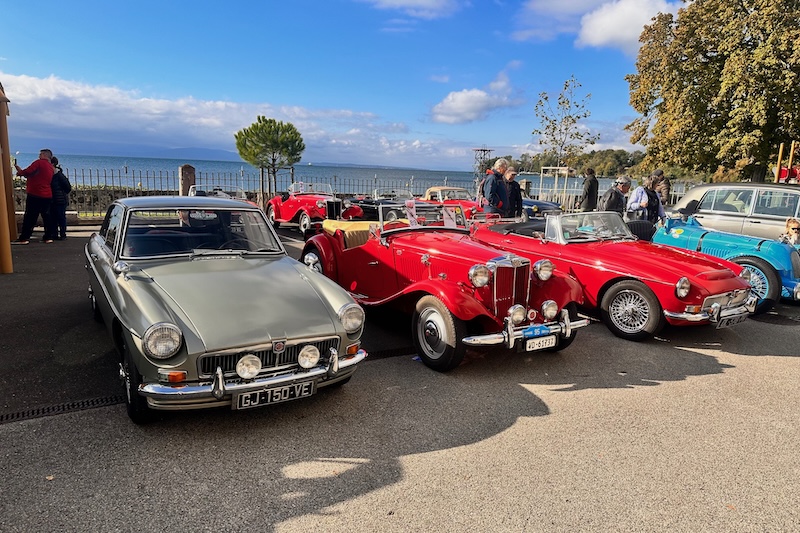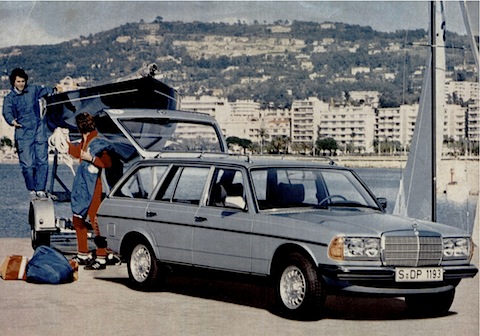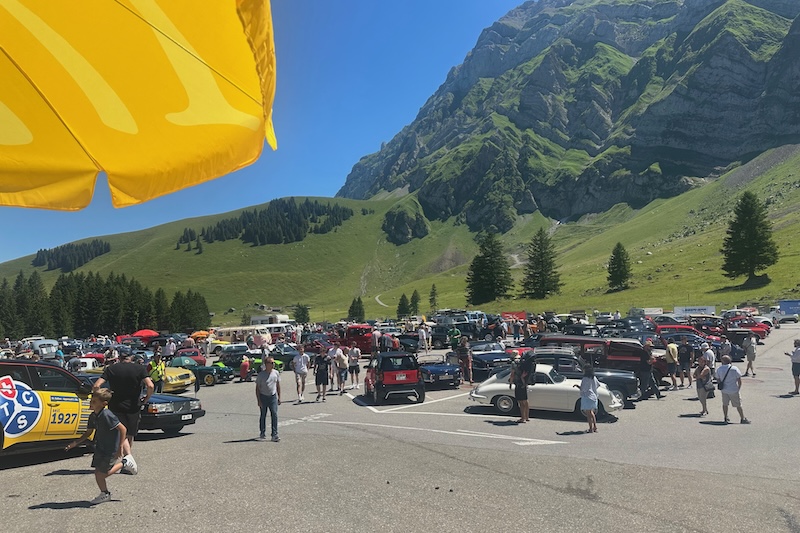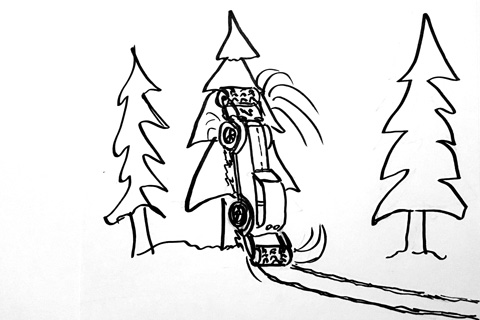The region around the Bachtel, the striking mountain in the Zurich Oberland, was once known as the "Manchester of Switzerland". The reason for this was the numerous textile factories in the area. Rivers and streams, such as the Jona in Wald ZH, supplied the factories, spinning mills and weaving mills with the energy they needed.
The factory owners were the drivers of technological progress, they paid for the railroads in the region, brought electricity into their factories for the first time, and soon afterwards into the workers' homes. And some of those who built the necessary machines for the textile industry also tinkered around with bicycles and later with automobiles. And mobility was important if you wanted to be in touch with the whole world. This was also the case in Wald.
The Waldner Bahnhofstrasse is a feature of the village. When the railroad was built in 1876, the entire village was virtually rethought, with the houses being aligned towards the station of the former Wald-Rüti Railway with a connection to the Vereinigte Schweizerbahnen in Rüti and the Tössthalbahn in the direction of Bauma. The connection was financed by the industrialists of the region, just as they promoted a "representative" townscape. By the end of the 19th century, Wald was definitely no longer a farming village, but an industrial town.
Focal point Bahnhofstrasse Wald
The Wald Rollt event would hardly have come about without this reference. One of the heirs of Otto Johann Honegger AG, Andreas Honegger, was instrumental in guiding and driving forward the conversion of the old, listed Bleiche industrial complex into a commercial, residential, gastronomic and cultural center.
As he says, more people work on the site today than was the case when it was an advertising and spinning mill in the 1930s to 1950s. A great car enthusiast himself, he organized a rally for his friends and guests at the Bleiche, the Bleiche Motor Trophy, just over 10 years ago. The cars were supposed to drive over a ramp, but this would have been so expensive that Honegger looked for an alternative and found one: The station ramp at the end of the same road. This is where the participants of the first Trophy drive up and are commented on, and a village festival is quickly organized. The event is a success. And it is different.
Local history has played a role from the very beginning, celebrating the Bahnhofstrasse and its textile past. This may be one of the reasons why so much emphasis was placed on the clothing of the past.
Later editions dispensed with the ramp and it was demolished, according to SBB. However, it still stands today. However, due to the constantly growing influx of visitor vehicles, it is no longer possible to present every single vehicle, from bicycles to Saurer trucks. For this reason, the Presentation d'Excellence was created, a small, fine concours with around 30 cars at a time. This was initially held somewhat off the main street, Bahnhofstrasse, but this year the organizers have decided to move the core of Wald Rollt directly to the backbone of Wald.
Capacity limits
The seventh edition of the event, which has been taking place since 2014, also required an early start. The Bahnhofstrasse, which serves as a parking lot for the vehicles, and the parking spaces in front of the SBB ramp were already full to bursting in the late morning. However, the mix was highly impressive.
From simple everyday classics such as a slightly battered Opel Olympia Rekord or a historic, repurposed American as a pick-up. The same can also be said of a Meili car tractor, which was built in 1946 from a 1933 Chrysler Royal eight-cylinder engine with a Meili patented rear axle and a greatly shortened wheelbase - one of the highlights of Wald Rollt 2025.
There was everything in between: Fat Americans, various Citroën AZU and AK Fourgonettes, cars of all kinds and types, plus bicycles and motorcycles and lots and lots of historic agricultural machinery.
At 11.00 a.m., the Walder Compagnie 1861 in historical uniforms fired their muzzle-loaders. Wald Rollt 2025 was given a real boost with a loud bang.
The organizers made it clear that they wanted to give the textile part of their meeting more importance again with the vintage fashion show at 1 p.m., precisely in the place where the Concours - pardon! - the Presentation d'Elegance would take place later. It's amazing how a layman can somehow recognize that these dresses no longer correspond to current tastes, but the question is: why and how can you tell?
You could describe it like this: An expert like the organizer Geraldine Granget from Suhr (AG), who has sewn many of the dresses on show using old patterns or refurbished original examples, laughs at our lack of knowledge in these matters in the same way we do when someone clueless confuses a VW Beetle with a Citroën 2CV. Well, after the fashion show, most people knew the difference between a 1920s evening dress and a 1950s petticoat.
Show winner
It is always interesting to observe in Wald what the many ordinary festival visitors choose as their favorite. In recent years, the organizers have repeatedly discovered that the perception of a highlight is based on completely different criteria by laypeople than by insiders and supposed and real experts.
This year, the audience in Walden chose the oldest car in the competition as the winner: the 1912 Ford-T Speedster from Patrik A. Bischoff in the pre-war car category. Fredy Durrer's Lotus Europa Special won the closed post-war car category, while Rita Sulzer's 1956 Ford Thunderbird - a gift from her then future husband - took the trophy for the best car. won the trophy for the most beautiful open-top post-war car, even if the owner had decided to put on the hardtop and porthole due to the weather conditions.
Wald Rollt's own jury selected the 1965 de Tomaso Vallelunga as Best of Show. Thomas Entzeroth's car is the very first production Vallelunga ever with chassis number 807 DT 101. However, Peter Kruse's Austin-Healey 100 S or Rolf Brechbühl's Cisitalia 202 would also have been worthy winners - or the Nash Healey, but possibly also the AC 428 Frua...
By the time the heavy rain set in at around 4.30 pm, many visitors had already gone home. As the organizers confirmed, this was probably the best-attended "Wald Rollt" to date. According to the OC, there will be a slightly smaller version next year, the Bahnhofstrasse is being renovated and will not be available, and the structure of the organization will also be different. On June 15, however, it once again proved very impressively that the way this rather unusual meeting is organized is just right.
